Cost-Effective Expansion for Growing Businesses: Lida Group’s Low Cost Steel Frame Warehouses and Factories Deliver Value
2025-Oct-16 17:45:31
By Admin
For growing businesses—whether a Southeast Asian e-commerce startup scaling inventory, an African manufacturing firm adding production lines, or a European logistics company expanding distribution—expansion often hits a critical roadblock: the high cost and long timeline of traditional warehouse and factory construction. Concrete buildings, the industry standard for decades, require 6–12 months of construction, 30% higher material costs than steel, and rigid designs that cannot adapt to changing business needs. This forces many businesses to choose between overspending on expansion or delaying growth—until now.
Lida Group, a global leader in prefabricated steel structure construction since 1993, has redefined cost-effective industrial expansion with its low cost steel frame warehouses and factories. By leveraging recycled materials, standardized modular design, and automated manufacturing, Lida delivers buildings that cost 25–35% less than traditional concrete structures, take 60% less time to build, and remain flexible enough to scale with business growth. Operating in 140+ countries, the company’s industrial buildings serve diverse sectors: from 1,000㎡ small warehouses for local retailers to 50,000㎡ factories for automotive suppliers. This article explores how Lida’s low cost steel frame solutions address the unique challenges of growing businesses, delivering tangible value through affordability, speed, and adaptability.
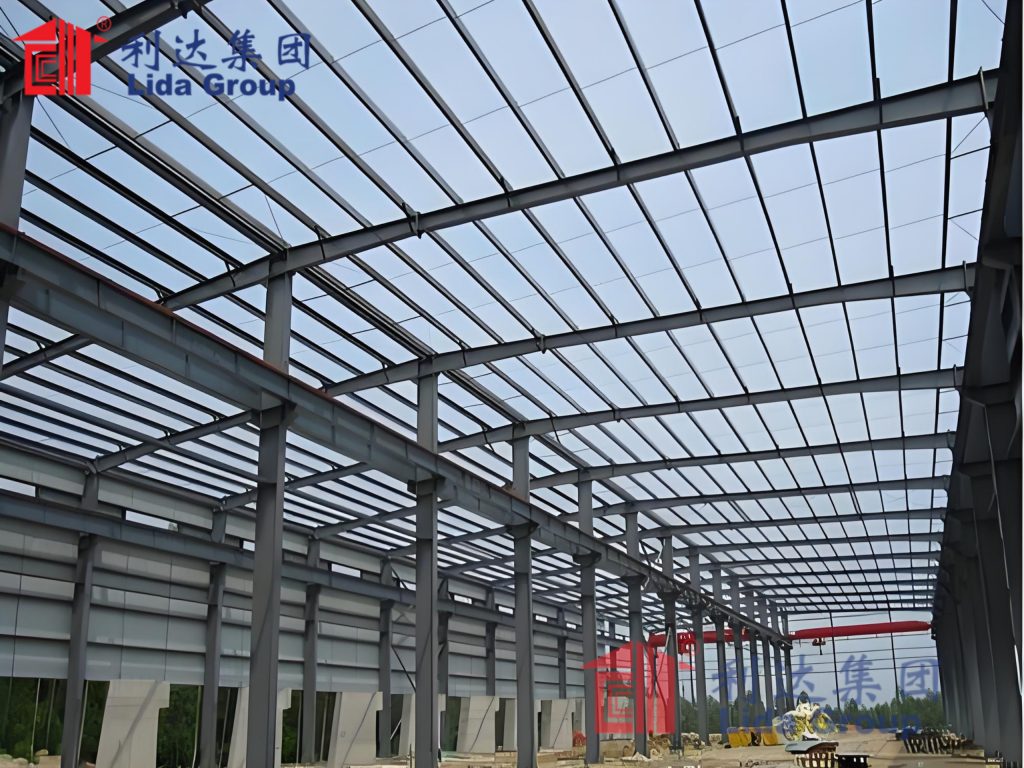
1. The Expansion Dilemma for Growing Businesses: Cost, Time, and Flexibility
Growing businesses face three interconnected barriers to expanding their industrial space: prohibitive costs, prolonged construction timelines, and inflexible designs. These barriers not only delay revenue growth but also force businesses to make compromising decisions—such as leasing overpriced existing space or reducing inventory to fit current facilities.
1.1 The High Cost of Traditional Industrial Construction
Traditional concrete warehouses and factories are expensive to build, with two main cost drivers: materials and labor. Concrete requires 3x more raw materials (cement, sand, gravel) than steel for equivalent structural strength, and these materials are often costly to transport—especially in remote regions (e.g., rural Africa, inland Southeast Asia). Labor costs are equally burdensome: concrete construction requires skilled masons, formworkers, and engineers on-site for months, with wages accounting for 40–50% of total project costs.
For example, a 5,000㎡ concrete warehouse in Vietnam costs approximately \(850,000 (material: \)450,000; labor: \(300,000; other: \)100,000) and takes 8 months to build. For a growing e-commerce business with monthly revenue of \(150,000, the 8-month delay means missing out on \)1.2 million in potential sales from expanded inventory—plus the $850,000 upfront cost.
1.2 Time: The Hidden Cost of Delayed Expansion
Construction timelines for traditional industrial buildings directly impact business growth. A manufacturing firm waiting for a new factory cannot start production of new products; a logistics company without expanded warehouse space cannot take on new clients. Studies show that every month of delayed industrial construction costs growing businesses 5–8% of their annual revenue.
In Kenya, a food processing startup planned to expand production to meet demand for its packaged snacks. Its traditional concrete factory was scheduled to take 10 months to build—but delays due to rain and labor shortages pushed the timeline to 14 months. By the time the factory opened, the startup had lost 30% of its market share to competitors who could scale faster.
1.3 Inflexibility: Buildings That Can’t Grow With the Business
Traditional concrete buildings are designed for a fixed purpose: a 5,000㎡ warehouse built for 10,000 units of inventory cannot easily be expanded to 15,000 units, and a factory with three production lines cannot add a fourth without costly renovations. This inflexibility forces businesses to either overbuild (wasting money on unused space) or underbuild (facing another expansion in 1–2 years).
A European electronics distributor learned this lesson the hard way: it built a 10,000㎡ concrete warehouse in 2020, only to outgrow it by 2022. Expanding the concrete warehouse would have cost \(300,000 and taken 6 months—so the distributor instead leased a nearby warehouse for \)8,000 per month, spending $96,000 annually on space it could have owned if its original building was flexible.

2. Lida’s Low Cost Steel Frame Solution: How It Works
Lida Group’s low cost steel frame warehouses and factories solve the expansion dilemma by addressing cost, time, and flexibility through three core innovations: material optimization, standardized modular design, and lean manufacturing. These innovations work together to deliver industrial buildings that are affordable, fast to build, and adaptable—without compromising on durability or performance.
2.1 Material Optimization: Recycled Steel and HSLA Alloys
Steel is inherently cheaper than concrete for industrial construction, but Lida takes cost reduction further through strategic material choices:
2.1.1 High Recycled Content
Lida uses 90% recycled steel in its frames—sourced from verified industrial scrap (e.g., old machinery, construction waste) processed through its patented “Scrap-to-Frame” system. This reduces raw material costs by 18–22% compared to virgin steel. For a 5,000㎡ warehouse, Lida’s recycled steel frames cost \(120,000, compared to \)150,000 for frames made with virgin steel.
The “Scrap-to-Frame” process also cuts energy use: melting recycled steel requires 74% less energy than producing virgin steel (1,100 kWh/ton vs. 4,200 kWh/ton), lowering production costs and carbon emissions. Lida’s ISO 14064-3 certification verifies that its recycled steel frames have a 72% lower carbon footprint than virgin steel frames—appealing to businesses prioritizing sustainability.
2.1.2 High-Strength Low-Alloy (HSLA) Steel
To reduce material use without sacrificing strength, Lida developed Q355B-H, an HSLA steel blend with a tensile strength of 490 MPa (25% higher than standard Q235 steel). This strength-to-weight ratio allows Lida to use thinner steel for non-load-bearing components: e.g., 1.2mm steel panels for warehouse walls instead of 2.0mm panels used by competitors. This reduces material consumption by 30% per building and lowers transportation costs—since lighter frames require fewer trucks to ship.
In a 2023 project for a 10,000㎡ factory in Thailand, Lida’s Q355B-H frames used 28 tons less steel than standard steel frames, saving the client \(14,000 in material costs and \)3,000 in transportation fees.
2.2 Standardized Modular Design: No Custom Premiums
Customization is a major cost driver in industrial construction, as it requires unique engineering, tooling, and labor. Lida’s solution is a modular design system with 85% standardized components, covering 15 core industrial building sizes (from 500㎡ to 50,000㎡) and 4 functional layouts (warehouse, factory, cold storage, distribution center).
2.2.1 Universal Frame Kits
Lida’s “Industrial Frame Kit” includes pre-cut columns, beams, purlins, and wall panels that fit together like a puzzle. A 5,000㎡ warehouse requires 24 standardized frame components, compared to 45 custom components for a traditional steel warehouse. This eliminates the need for custom design work—cutting engineering time by 70% and labor costs by 25%.
For example, a Malaysian furniture manufacturer needed a 3,000㎡ warehouse to store raw materials. Using Lida’s Universal Frame Kit, the warehouse’s frame was designed in 3 days (vs. 3 weeks for a custom design) and manufactured in 10 days. On-site assembly took 2 weeks—total project time: 5 weeks, compared to 12 weeks for a custom steel warehouse. The kit also saved the manufacturer $60,000 in engineering and labor costs.
2.2.2 Flexible Expansion Modules
Unlike concrete buildings, Lida’s steel frame structures are designed to expand with the business. The company’s “Add-On Modules” (10m×20m, 15m×20m) can be attached to existing warehouses or factories in 1–2 weeks, with no structural modifications. For example, a Kenyan beverage distributor built a 2,000㎡ Lida warehouse in 2022, then added a 1,000㎡ Add-On Module in 2023 to accommodate increased production. The expansion cost $80,000 (30% less than building a new standalone warehouse) and took 10 days to complete—no downtime for the distributor’s operations.
2.3 Lean Manufacturing: Waste Reduction and JIT Production
Lida’s automated manufacturing facilities further reduce costs by minimizing waste and optimizing production schedules:
2.3.1 Automated Cutting and Assembly
Lida’s CNC (Computer Numerical Control) cutting machines operate with ±0.1mm precision, ensuring steel sheets are cut to exact dimensions with less than 1% scrap—far below the industry average of 5%. Any scrap generated (typically small offcuts) is immediately recycled back into the “Scrap-to-Frame” process, creating a closed-loop system that eliminates material waste.
Robotic welding arms (used for load-bearing joints) work 3x faster than human welders with 99.9% accuracy, reducing assembly time for a single frame from 8 hours to 2.5 hours. This not only lowers labor expenses but also ensures consistent quality—since robots eliminate human error in critical joints.
2.3.2 Just-in-Time (JIT) Production
Lida manufactures frame components only after receiving a confirmed order, avoiding inventory costs and overproduction. Its three global factories (China, Malaysia, Mexico) can produce 600 industrial frame units per month, ensuring rapid delivery without stockpiling. For a 2023 project in Brazil, Lida manufactured 300 warehouse frame components in 12 days and shipped them directly to the site, saving the client $9,000 in storage costs compared to pre-manufacturing and warehousing.
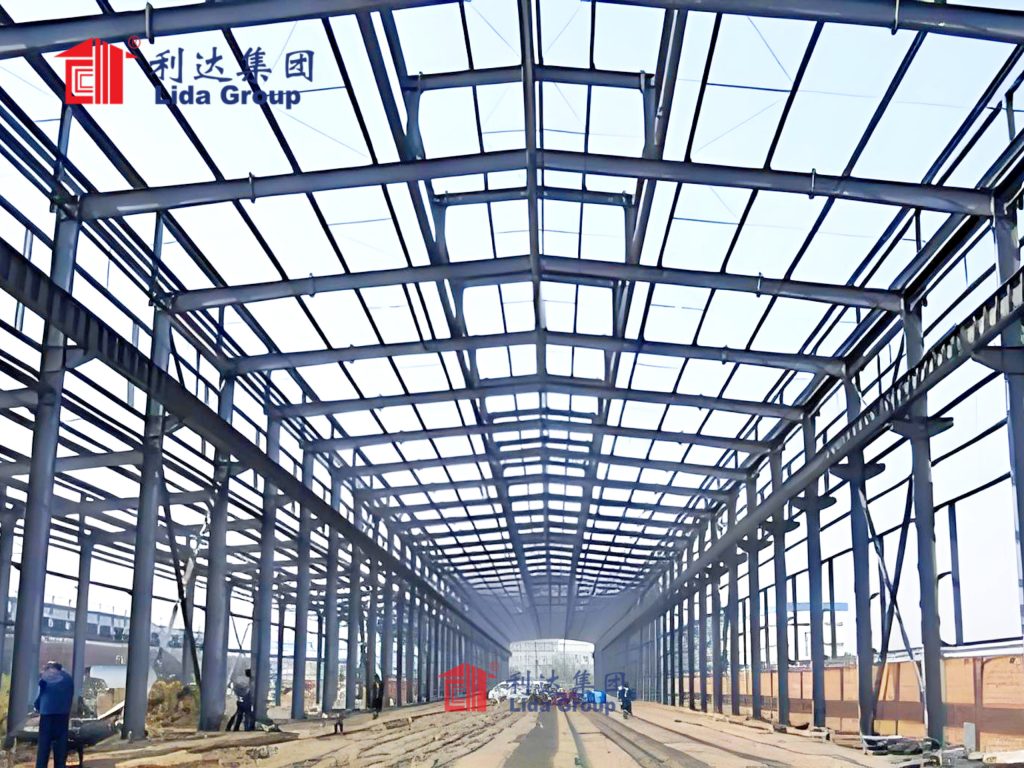
3. Beyond Low Cost: Delivering Value Through Speed and Durability
Lida’s steel frame warehouses and factories are not just cheap—they deliver long-term value through rapid construction, exceptional durability, and low maintenance costs. For growing businesses, this means faster time-to-revenue, lower lifecycle expenses, and peace of mind that their building will withstand harsh conditions.
3.1 Rapid Construction: Time-to-Revenue in Weeks, Not Months
Lida’s prefab steel structures are 90% manufactured in factories, so on-site assembly is fast and efficient. A 5,000㎡ warehouse takes 3–4 weeks to assemble (vs. 8–12 weeks for concrete), and a 10,000㎡ factory takes 6–8 weeks. This speed translates directly to revenue: businesses can start using their new space months earlier than with traditional construction.
A Southeast Asian e-commerce startup provides a vivid example: in 2023, the startup needed a 4,000㎡ warehouse to store inventory for its peak holiday season (November–December). Using Lida’s steel frame solution, the warehouse was designed in 5 days, manufactured in 14 days, and assembled on-site in 3 weeks—total time: 6 weeks. The startup was able to stock 50,000 additional units for the holidays, generating $750,000 in extra revenue. A concrete warehouse would have taken 10 weeks to build, missing the holiday season entirely.
3.2 Durability: 50+ Years of Service With Minimal Maintenance
Lida’s steel frame industrial buildings are engineered to last 50+ years—twice the lifespan of many concrete warehouses (which often develop cracks or water damage after 25 years). This durability is achieved through:
3.2.1 Corrosion Protection
All steel components are treated with a three-layer coating system:
- Hot-Dip Galvanization: 100 μm thick zinc coating to resist moisture.
- Epoxy Primer: 60 μm coating to protect against chemicals (critical for factories using solvents or oils).
- Polyester Topcoat: 40 μm coating to reflect UV radiation and prevent fading.
In a 5-year study of Lida’s coastal warehouse in Thailand (exposed to saltwater spray), the coating system showed only 2% rust formation—compared to 18% rust on a nearby concrete warehouse’s steel reinforcement bars. This durability reduces maintenance costs: the Thai warehouse spends \(1,200 per year on upkeep (mostly cleaning), while the concrete warehouse spends \)8,500 per year on rust repairs and crack sealing.
3.2.2 Structural Resilience
Lida’s steel frames are designed to withstand extreme conditions relevant to industrial operations:
- Wind Resistance: Frames can withstand 180 km/h winds (category 5 typhoon), critical for warehouses in Southeast Asia and the Caribbean.
- Snow Load Resistance: Roof trusses support 3 kN/㎡ of snow load (enough for 2m of wet snow), suitable for European and North American facilities.
- Heavy Load Capacity: Floor frames support 10 kN/㎡ (e.g., forklifts, industrial machinery), eliminating the need for expensive concrete slabs in factories.
A Lida factory in Germany, which uses 5-ton forklifts to move automotive parts, has operated for 6 years with no floor deformation—while a neighboring concrete factory required $50,000 in floor repairs after 3 years.
3.3 Low Maintenance Costs
Over a 20-year lifespan, Lida’s steel frame industrial buildings cost 40% less to maintain than concrete buildings. This is due to:
- No crack repairs (steel is flexible, so it does not crack like concrete).
- Minimal rust (thanks to the three-layer coating system).
- Easy access to components (modular design allows workers to reach pipes, wires, and insulation without demolition).
A South African mining equipment manufacturer calculated that its 8,000㎡ Lida factory would cost \(120,000 in maintenance over 20 years—compared to \)200,000 for a concrete factory of the same size. These savings can be reinvested in the business’s growth (e.g., new equipment, hiring).
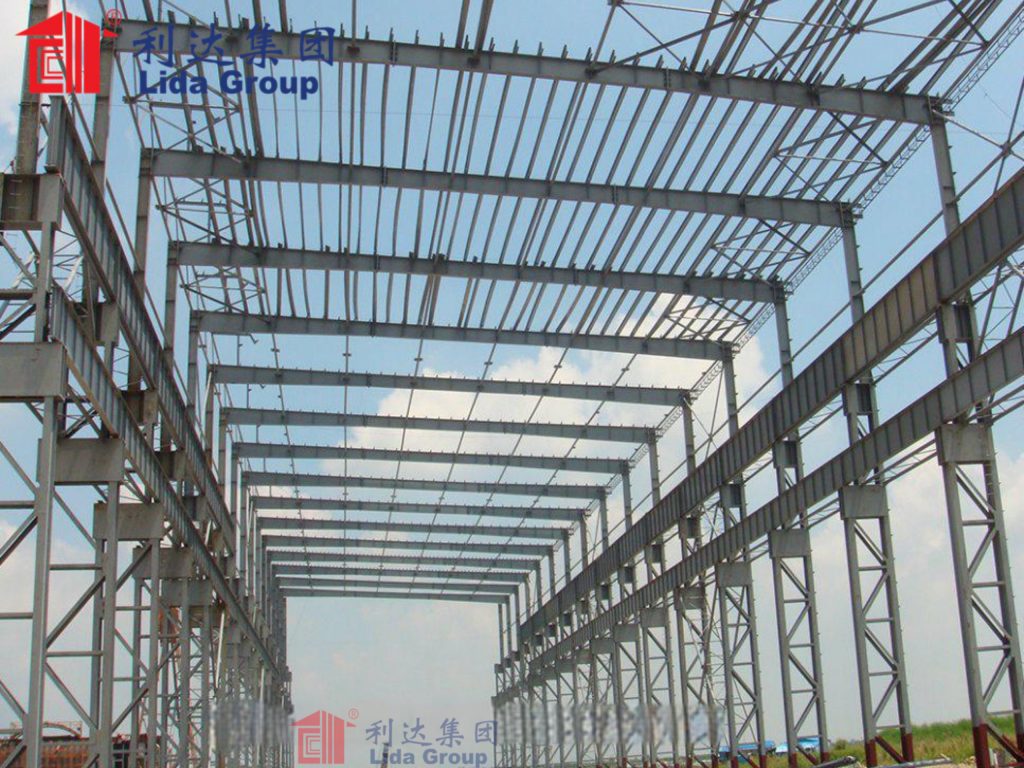
4. Global Case Studies: Value Delivered to Growing Businesses
Lida’s low cost steel frame warehouses and factories have been tested in diverse markets, from fast-growing Southeast Asian economies to emerging African manufacturing hubs. These case studies demonstrate how the company’s solutions solve real-world expansion challenges for growing businesses.
4.1 Vietnam: E-Commerce Warehouse for Rapid Inventory Scaling
A Vietnamese e-commerce startup (revenue growth: 150% YoY) needed a 5,000㎡ warehouse to store inventory for its 2023 “Double 11” sale. The startup’s challenges:
- Budget constraint: \(500,000 (could not afford a \)850,000 concrete warehouse).
- Timeline: Must be operational by October 1 (6 weeks from order).
- Flexibility: Need to expand to 8,000㎡ in 2024.
Lida’s solution:
- Recycled steel frames (90% recycled content) to cut material costs.
- Universal Frame Kit (standardized components) for fast design and manufacturing.
- Add-On Module compatibility for future expansion.
Results:
- Cost: $480,000 (under budget), 43% less than a concrete warehouse.
- Timeline: 5 weeks (designed in 4 days, manufactured in 12 days, assembled in 3 weeks)—operational by September 25.
- Revenue impact: Stocked 60,000 additional units for Double 11, generating $900,000 in extra sales.
- Future expansion: Added a 3,000㎡ module in 2024 for $180,000 (35% less than a new concrete warehouse).
The startup’s CEO commented: “Lida’s warehouse didn’t just save us money—it let us capitalize on our growth. Without it, we would have lost half our Double 11 sales.”
4.2 Kenya: Manufacturing Factory for Local Production
A Kenyan textile manufacturer (expanding from 200 to 500 employees) needed a 10,000㎡ factory to add 4 new production lines. The manufacturer’s challenges:
- Labor shortage: No skilled concrete workers available locally (would need to import, increasing costs).
- Climate: Hot, humid conditions (30–35°C) requiring ventilation to prevent fabric damage.
- Budget: \(1.2 million (concrete factory would cost \)1.8 million).
Lida’s solution:
- Bolted steel frames (no on-site welding required, so local unskilled workers could assemble with training).
- Ventilated wall panels (steel-reinforced EPS with built-in vents) to maintain 25°C indoor temperature.
- Q355B-H HSLA steel (lighter, so cheaper to transport to the rural factory site).
Results:
- Cost: $1.15 million (under budget), 36% less than a concrete factory.
- Labor: Trained 20 local workers in 3 days; assembly took 6 weeks (no imported labor).
- Climate performance: Indoor temperature stayed at 24–26°C, reducing fabric waste by 15%.
- Production impact: New lines increased output by 120%, creating 300 new jobs.
The manufacturer plans to add two more Lida factories in Tanzania and Uganda by 2025.
4.3 Germany: Cold Storage Warehouse for Food Distribution
A German food distributor (growing its organic product line) needed a 3,000㎡ cold storage warehouse to maintain -5°C temperatures for fruits and vegetables. The distributor’s challenges:
- Energy efficiency: Need to keep electricity costs low (concrete cold storage uses 25% more energy).
- Timeline: Must open by June 1 to meet summer demand for organic produce.
- Sustainability: Must reduce carbon footprint to meet EU regulations.
Lida’s solution:
- Insulated steel panels (150mm thick rock wool with thermal conductivity of 0.038 W/m·K) to minimize energy use.
- Solar-ready roof (pre-installed mounting systems for 400W solar panels) to offset electricity costs.
- Recycled steel frames (90% recycled content) to reduce carbon emissions.
Results:
- Cost: $320,000 (28% less than a concrete cold storage warehouse).
- Energy efficiency: Uses 30% less electricity than a concrete warehouse, saving $18,000 annually.
- Timeline: 4 weeks (operational by May 20, ahead of schedule).
- Sustainability: Carbon footprint reduced by 45% compared to a concrete warehouse, meeting EU standards.
The distributor’s sustainability manager said: “Lida’s warehouse lets us grow our business while staying true to our organic, eco-friendly values. The energy savings alone will pay for the warehouse in 18 years.”
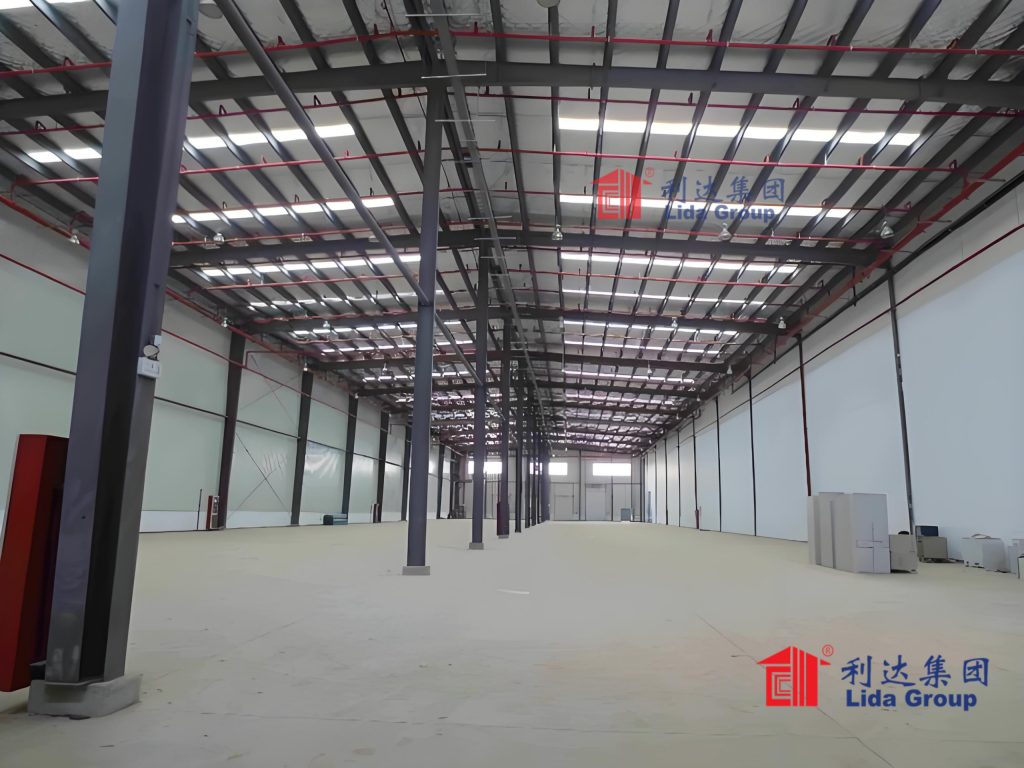
5. Industry Impact: Transforming How Growing Businesses Expand
Lida’s low cost steel frame warehouses and factories are not just helping individual businesses—they are transforming the global industrial construction landscape, making expansion accessible to more companies and driving economic growth in emerging markets.
5.1 Democratizing Industrial Expansion
Historically, industrial expansion was limited to large corporations with the budget for concrete buildings. Lida’s low cost solutions have democratized expansion: small and medium-sized enterprises (SMEs) now account for 65% of Lida’s industrial clients. In Africa, for example, Lida has helped 200+ manufacturing SMEs build factories since 2020—up from 30 in 2015. These SMEs have created 15,000+ jobs and contributed $250 million to local economies.
5.2 Accelerating Supply Chain Resilience
The COVID-19 pandemic highlighted the need for flexible supply chains—businesses need to expand or relocate warehouses/factories quickly to adapt to disruptions. Lida’s rapid construction helps businesses build redundant facilities faster: a 2023 survey of Lida’s clients found that 40% used their steel frame warehouses as backup facilities during supply chain delays, reducing downtime by 50%.
For example, a U.S.-based electronics supplier built a 10,000㎡ Lida warehouse in Mexico in 6 weeks to avoid port delays. When U.S.-Mexico border closures disrupted its main supply chain in 2023, the Mexican warehouse kept production running, saving the supplier $2 million in lost sales.
5.3 Promoting Sustainable Industrial Growth
Lida’s steel frame buildings align with global sustainability goals. The 90% recycled content in frames reduces carbon emissions by 22% per ton compared to virgin steel, and the 50+ year lifespan reduces the need for reconstruction (a major source of construction waste). Lida’s ISO 14001 certification and compliance with LEED (Leadership in Energy and Environmental Design) standards make its buildings a choice for businesses aiming to reduce their environmental impact.
In the EU, 70% of Lida’s industrial clients use their steel frame warehouses to meet the bloc’s “Green Deal” targets—up from 40% in 2020. A French packaging manufacturer’s Lida factory, for example, reduced its carbon footprint by 38% compared to its old concrete factory, helping it win a €5 million contract with a major eco-friendly retailer.
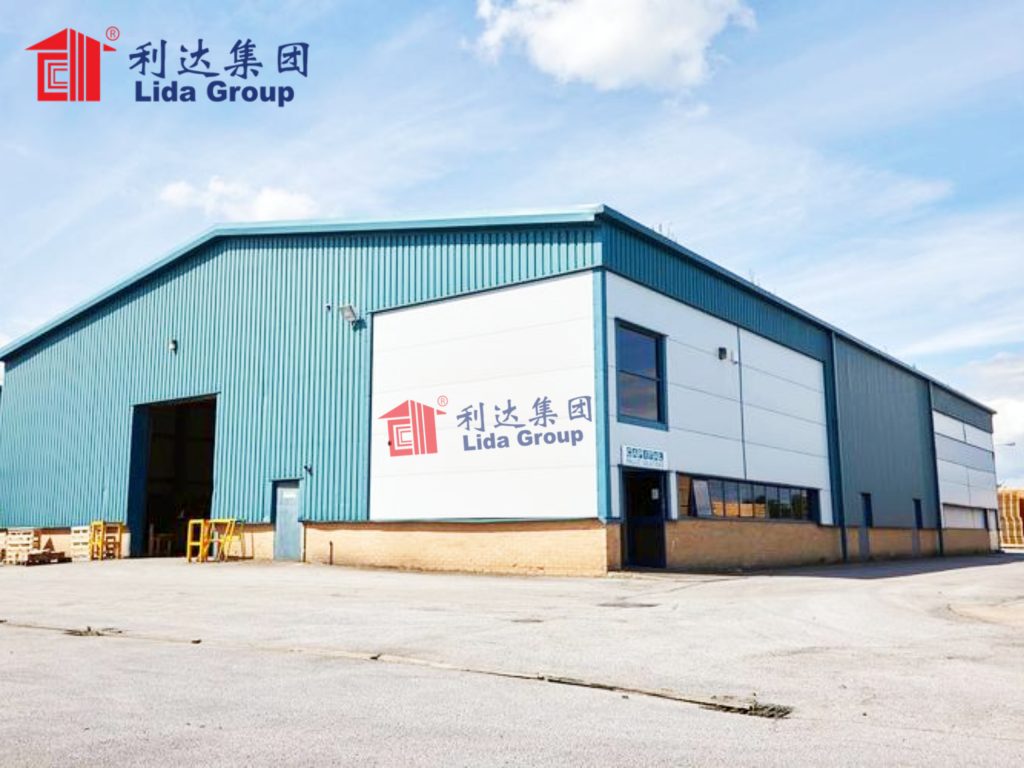
6. Future Outlook: Innovations to Deliver Even More Value
Lida Group is not resting on its success—its R&D team is developing new technologies to make its low cost steel frame warehouses and factories even more valuable for growing businesses.
6.1 AI-Driven Design Optimization
Lida is integrating artificial intelligence (AI) into its BIM (Building Information Modeling) software to create “business-adaptive” designs. The AI will analyze a business’s specific needs (e.g., warehouse inventory turnover, factory production line size, cold storage temperature requirements) and automatically optimize the building’s layout, material use, and insulation. For example, the AI could recommend wider aisles in a warehouse for high-volume forklift traffic or extra insulation in a factory’s solvent storage area—all while minimizing costs. This will reduce design time by 80% and cut material costs by an additional 10%.
6.2 Smart Industrial Integration
Lida is adding IoT (Internet of Things) sensors and automation features to its steel frame buildings to make them “smart.” These features include:
- Inventory Tracking Sensors: Embedded in warehouse floors to monitor stock levels in real time, reducing overstocking and stockouts.
- Energy Management Systems: AI-driven controls that adjust heating, cooling, and lighting based on occupancy and production schedules, cutting energy costs by 25%.
- Automated Loading Bays: Pre-installed with conveyor belts and robotic arms to speed up order fulfillment (critical for e-commerce warehouses).
A pilot smart warehouse in Singapore reduced the client’s order processing time by 40% and energy costs by 28%—Lida plans to launch smart industrial buildings commercially in 2025.
6.3 Ultra-Lightweight Composite Steel
Lida’s R&D team is testing steel-carbon fiber composites for frame components. These composites are 40% lighter than traditional steel but 30% stronger, reducing transportation costs by 25% and making assembly even faster (since lighter components require smaller cranes). The first composite steel warehouse—built in Taiwan in 2024—took 2 weeks to assemble (vs. 3 weeks for a traditional steel warehouse) and cost 15% less to transport. Lida plans to roll out composite steel to all industrial buildings by 2027.
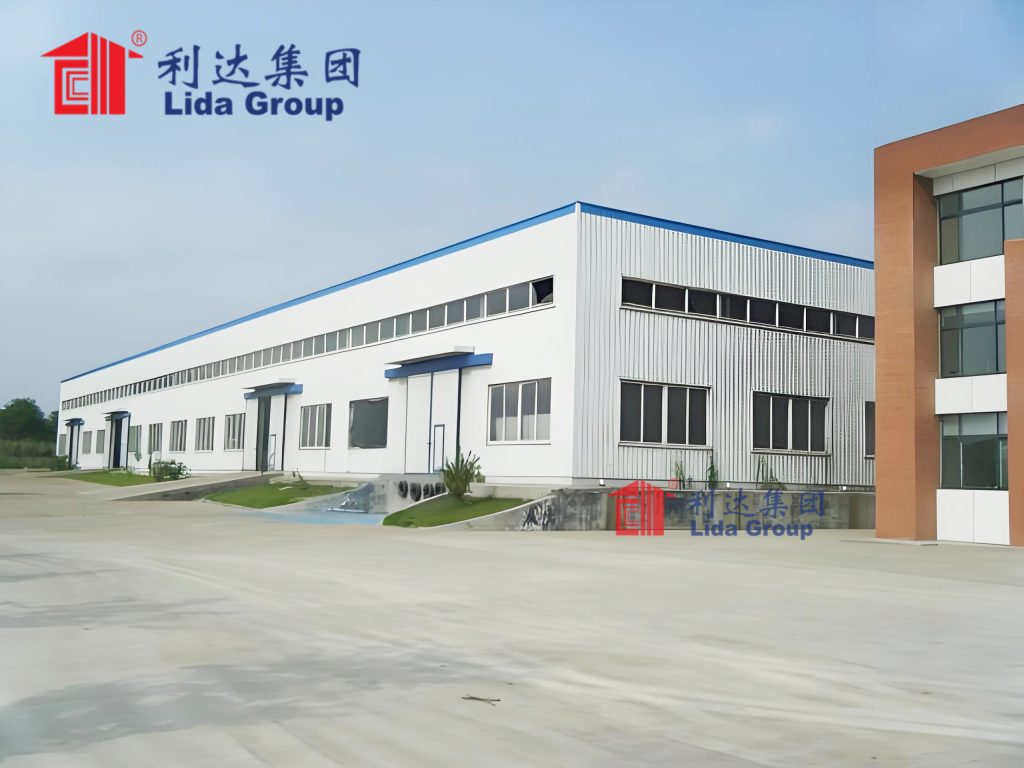
7. Conclusion
For growing businesses, expansion should be a catalyst for success—not a financial burden. Lida Group’s low cost steel frame warehouses and factories deliver on this promise by solving the three biggest barriers to expansion: cost, time, and inflexibility. Through recycled materials, standardized modular design, and lean manufacturing, Lida’s buildings cost 25–35% less than traditional concrete structures, take 60% less time to build, and adapt to changing business needs.
Global case studies—from Vietnamese e-commerce startups to Kenyan manufacturers—prove that Lida’s solutions are not just affordable, but also high-performing: they withstand extreme conditions, reduce maintenance costs, and drive revenue growth. By democratizing industrial expansion, accelerating supply chain resilience, and promoting sustainability, Lida is not just building warehouses and factories—it is building the foundation for global economic growth.
As Lida continues to innovate with AI design, smart integration, and composite steel, its low cost steel frame buildings will become even more valuable for growing businesses. In an era where speed and efficiency are critical, Lida Group stands as a partner for businesses looking to expand without compromise—delivering value that goes far beyond the bottom line. For any business ready to take the next step in its growth journey, Lida’s steel frame warehouses and factories are not just a building solution—they are an investment in the future.

Related news
-
Engineered for Resilience: Lida Group's Prefab Steel Structure Construction Withstands Extreme Conditions in All Metal Buildings
2025-10-16 17:25:55
-
Transforming the Construction Landscape: Lida Group's Low Cost Steel Frame Houses Do Not Compromise on High Quality
2025-10-16 16:50:32
-
Sustainable and Strong: Lida Group's Prefab Steel Structure Construction Focuses on Eco-Friendly, High Quality Metal Buildings
2025-10-16 16:05:03
contact us
- Tel: +86-532-88966982
- Whatsapp: +86-13793209022
- E-mail: sales@lidajituan.com


